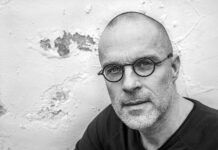A recent study published in Transcultural Psychiatry explores how extreme mental states associated with meditation are framed in case reports. The authors use a qualitative research method, Foucauldian discourse analysis, to understand how different perspectives on these extreme mental states are constructed through language. A prominent biomedical discourse and an alternative, psychospiritual discourse are observed. Each of these discourses reflects differences in how client experiences are understood and communicated.
Meditation is on the rise as a way of coping with a variety of distressing psychological symptoms, such as anxiety and depression. Although scientific data suggests that it can sometimes help, there is an underside to the meditation story that is also emerging.
Some report traumatic and otherwise extreme experiences as a result of their meditative practice. Research shows that these experiences can have negative effects which bleed over into people’s lives.
Just as meditation itself can be framed in different ways—for example the culturally and spiritually embedded forms of Buddhist practice versus the secular “McMindfulness” craze—extreme mental states arising as a result of meditation can be understood through more than one lens.
“In scientific articles, these phenomena have been variously described as psychiatric symptoms, ‘non-ordinary states of consciousness’ or ‘extreme mental states’, with a focus on individual risk factors. More recently, attempts have been made to explore such extreme mental states in different traditions such as Buddhist meditation practitioners,” write Justina Kaselionyte and co-author Dr. Andrew Gumley of the University of Glasgow.

The current study sought to map how extreme mental states associated with meditation are being framed, or “constructed.” The researchers performed a Foucauldian discourse analysis toward this end. Based in the ideas of the French philosopher Michel Foucault, this research method aims to gather insight around how language is used to promote certain types of understanding over others, as well as to explore how this can impact a person’s sense of self and sense of what is possible. The assumption here is that language does not simply reflect or describe the world, but helps to create it.
“In this study, discourse analysis was employed to explore the ways ‘extreme mental states’ in meditation are framed in published case reports. Discourse analysis can be situated within a social constructionist framework that seeks to examine how knowledge is historically and culturally relative. Therefore, there is not one knowledge but different ‘knowledges’, and the same phenomenon can be understood and described differently. Language is seen as more than a medium enabling communication or a reflection of reality but a powerful tool that can be used to construct different versions of it,” the authors explain.
In selecting articles to analyze, the authors searched a variety of databases and included only articles that included descriptions of extreme mental experiences associated with meditation. A total of 23 suitable articles were covered. The analysis was framed according to the following general questions:
- “How is the experience of extreme mental states described in the text?”
- “To what extent is the person’s agency acknowledged?”
- “What is the frame of reference used in the descriptions of these experiences?”
- “To what extent are alternative explanations incorporated?”
- “What was the response to these experiences?”
The most prominent discourse discovered by the researchers was a biomedical discourse, found in 15 of the 23 articles. This discourse involved framing people’s experience in terms of psychiatric language and clinical terminology.
Pathological clinical descriptors were discovered, such as “flat affect,” “pressured speech,” “mood swings,” “delusions,” and “suicidal ideation.” This psychiatric language often expressed marked certainty and a sense of expert objectivity, such as with the phrase “clearly psychotic” and the referencing of scientific instruments such as the Minnesota Multiphasic Personality Inventory.
On the other hand, when clients’ own descriptions of their experience were recorded, words such as “claimed” and “believed” showed up, pointing to a sense of unreliable subjectivity. Adding to this invalidation, when clients’ descriptions conflicted with diagnostic language, they were often reported as refusing to comply with a diagnosis or continuing to interpret their experience differently.
In terms of psychiatric intervention, clients were described without reference to personal choice or agency, such as in the phrase “she was managed pharmacologically.” These interventions were reported as highly effective at returning clients to normalcy, which focused on being rational, free from psychiatric symptoms, and functional in terms of occupation. When clients refused medication, it was framed as leading to a relapse of symptoms and psychiatric readmission.
10 out of the 15 biomedically oriented articles did not reference other possible interpretive lenses for clients’ experiences, or if they did, it was in support of the prevailing psychiatric perspective. Psychiatric understanding, rather than personal or cultural understanding, was presented as the final word on the matter.
Within the alternative discourse, more active and metaphorical language was employed. Additionally, rather than a distant clinical stance, phrases such as “she seemed” and “I noticed that I felt somewhat anxious and sad” showed a more personal and involved descriptive style, with less reliance on objectivity and authority. To this end, client names were included, even if they were changed for the sake of confidentiality. Additionally, including the authors’ own thoughts and reflections was a common theme.
When discussing clients’ own perspectives, phrases like “she thought” and “she felt” were used, as opposed to more skeptical words like “he claimed” in the biomedical discourse. Clients’ narratives were honored in the recording of the experiences. Often, these narratives were framed in terms of spirituality, cultural beliefs, or psychological understandings.
“She thought that she was going through an enlightening experience and did not understand people’s concern. She felt hurt that they pushed her away . . . Ada could not talk about her pain and felt that people would lock her up if she did.”
In contrast to the psychiatric treatment descriptions, alternative discourse treatments tended to emphasize the person’s own involvement in healing, with the authors serving as teachers, guides, or simply listeners. There was an emphasis on normalizing and supporting client experiences, which they recognized as distressing but not necessarily pathological.
Some descriptions of positive outcomes were included, such as gratefulness for the support, continuing to meditate, and making significant changes in vocation. The authors of these papers were clinical psychologists and counselors publishing in humanistic and transpersonal journals, among others.
Although the authors of the current study are critical of the biomedical discourse, they also recognize problems with the alternative discourse, such as being overly hostile to western medicine and still applying fixed labels to people’s experiences. Each discursive frame carries its own set of possibilities and constraining factors for the person experiencing extreme mental states associated with meditation.
The researchers conclude:
“We suggest that efforts should be made to create a supportive environment for people to integrate their extreme experiences and find meaning congruent with their values, beliefs and cultural background. Collaboration between spiritual teachers, therapists and clinicians should be encouraged to make a greater range of options available to persons with extreme mental states. For example, the International Spiritual Emergence Network supports people through spiritual crises worldwide and brings together mental health professionals and experts by experience (www.spiritualemergencenetwork.org). Furthermore, transpersonal psychotherapy focuses on both healing of personal issues and promoting spiritual growth.”
****
Kaselionyte, J., & Gumley, A. (2019). Psychosis or spiritual emergency? A Foucauldian discourse analysis of case reports of extreme mental states in the context of meditation. Transcultural Psychiatry. (Link)















“alternative discourses”
There is no alternative discourse, not on this forum in in these reports.
Distress is still looked at as cause for a self-improvement project, rather than as an indication of injustice which should be redressed.
“Meditation is on the rise as a way of coping with a variety of distressing psychological symptoms, such as anxiety and depression.”
Report comment
“client names were included…” This is something not often mentioned on this website. I learned from reading my medical records that psychiatrists tend to depersonalize clients who they are neurotoxic poisoning. To the extent that psychiatrists do NOT call their clients by their name, but instead by the “diagnosis” with which they’ve been defamed.
“Collaboration between spiritual teachers, therapists and clinicians should be encouraged to make a greater range of options available to persons with extreme mental states.” The DSM “bible” is being taught in the seminary schools already. The Holy Spirit blaspheming “mental health” workers took control of the mainstream Christian religions long ago, with their “dirty little secret of the two original educated professions” child abuse and rape covering up system.
https://www.indybay.org/newsitems/2019/01/23/18820633.php?fbclid=IwAR2-cgZPcEvbz7yFqMuUwneIuaqGleGiOzackY4N2sPeVXolwmEga5iKxdo
https://www.madinamerica.com/2016/04/heal-for-life/
I had to leave my religion, because I stand against child abuse, not in support of child abuse covering up religions and “mental health” workers.
https://www.amazon.com/Jesus-Culture-Wars-Reclaiming-Prayer/dp/1598868330
https://virtueonline.org/lutherans-elca-texas-catastrophe-coming-lesson-episcopalians
I also stand against those who blasphemy the Holy Spirit in their medical records, since that’s the only unforgivable sin in the Holy Bible. Thus this “Collaboration between spiritual teachers, therapists and clinicians” actually diminishes the “range of options available to persons with extreme mental states.” It means people’s religions have been usurped by DSM “bible” believers, instead of Holy Bible and God believers.
A dream about being “moved by the Holy Spirit” is NOT actually a “life long, incurable, genetic mental illness,” as our Holy Spirit blaspheming, child rape covering up “mental health” workers and religions believe. It’s merely a dream, meant to inform a person that the Holy Spirit has chosen to move that person. And poisoning people for belief in God, which is what our “mental health” workers do, is illegal. As is your, primarily child rape and abuse covering up, pedophile empowerment, “mental health” system, which is destroying our country.
https://www.amazon.com/Pedophilia-Empire-Chapter-Introduction-Disorder-ebook/dp/B0773QHGPT
Report comment
All religions have different types of calming meditation practices that can lead one to exceptionally pleasant, peaceful mind-states, when the mind is not engaged in mental proliferation, and is totally focused on the object of meditation in a relaxed manner. In Eastern religions, these states are referred to as “Samadhi.”
Many poets and writers describe encountering experiences of calm meditative mind-states, and refer to them as revelations of ecstasy. The English poet William Wordsworth describes these as “happy stillness of the mind,” where he believed that every man could attain the vision of joy and harmony of life in nature, which for him transformed the whole of existence.
These peaceful calm mind-states have been recorded throughout history in different cultures and are often considered as as mystical experiences. William James and other prominent psychologists (e.g. Maslow and Jung) have hailed mystical experiences considering them to be a sign of health and a powerful agent of integration. Studies have also shown that people who undergo these experiences display lower scores on psychopathology scales and higher psychological well-being.
So, I think it is very important that these states be not labelled as “pathological.”
Report comment
Do all the meditation you want. But please do not assault the honor of survivors by promoting meditation “… as a way of coping with a variety of distressing psychological symptoms, such as anxiety and depression.”
Report comment